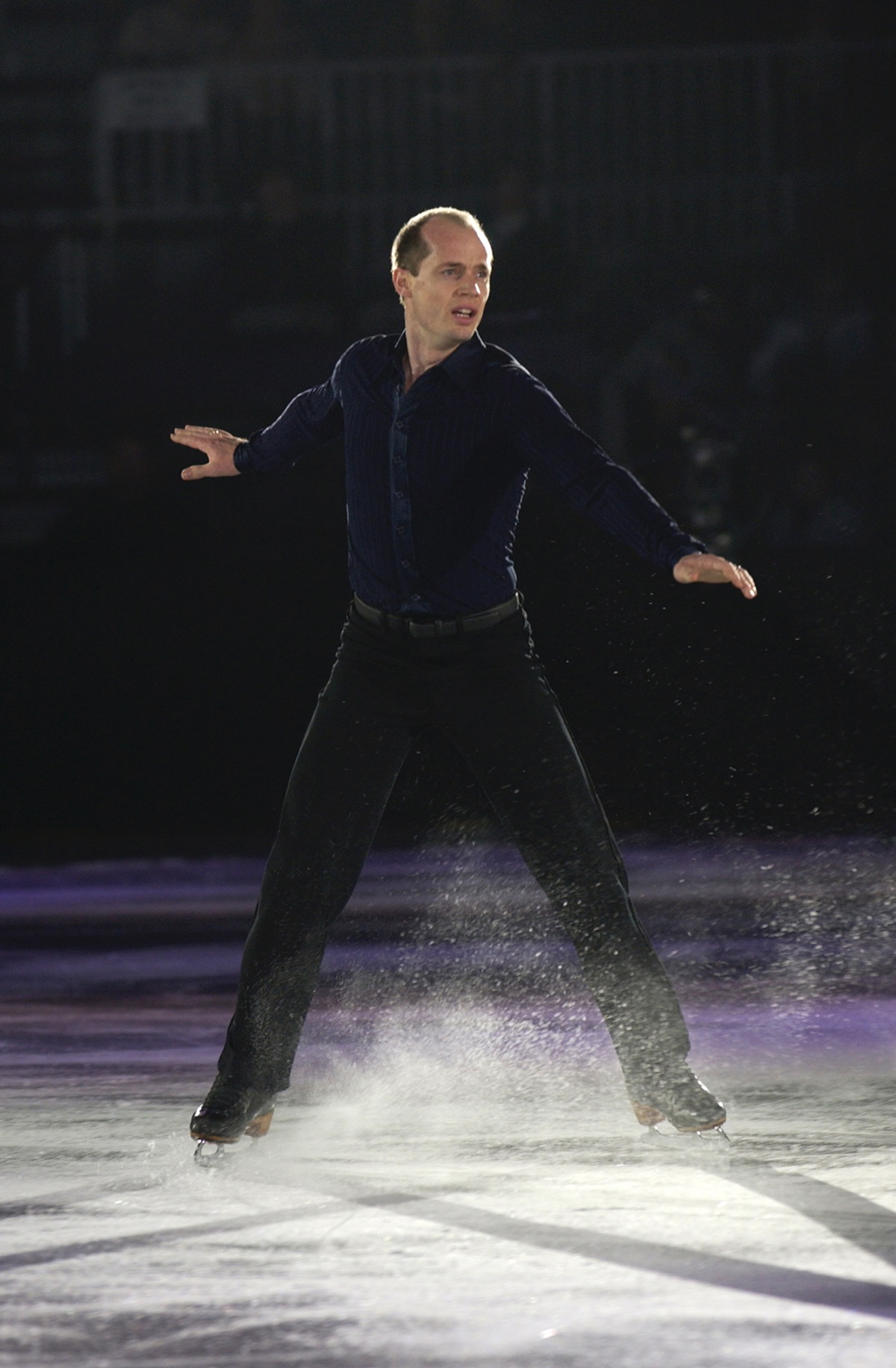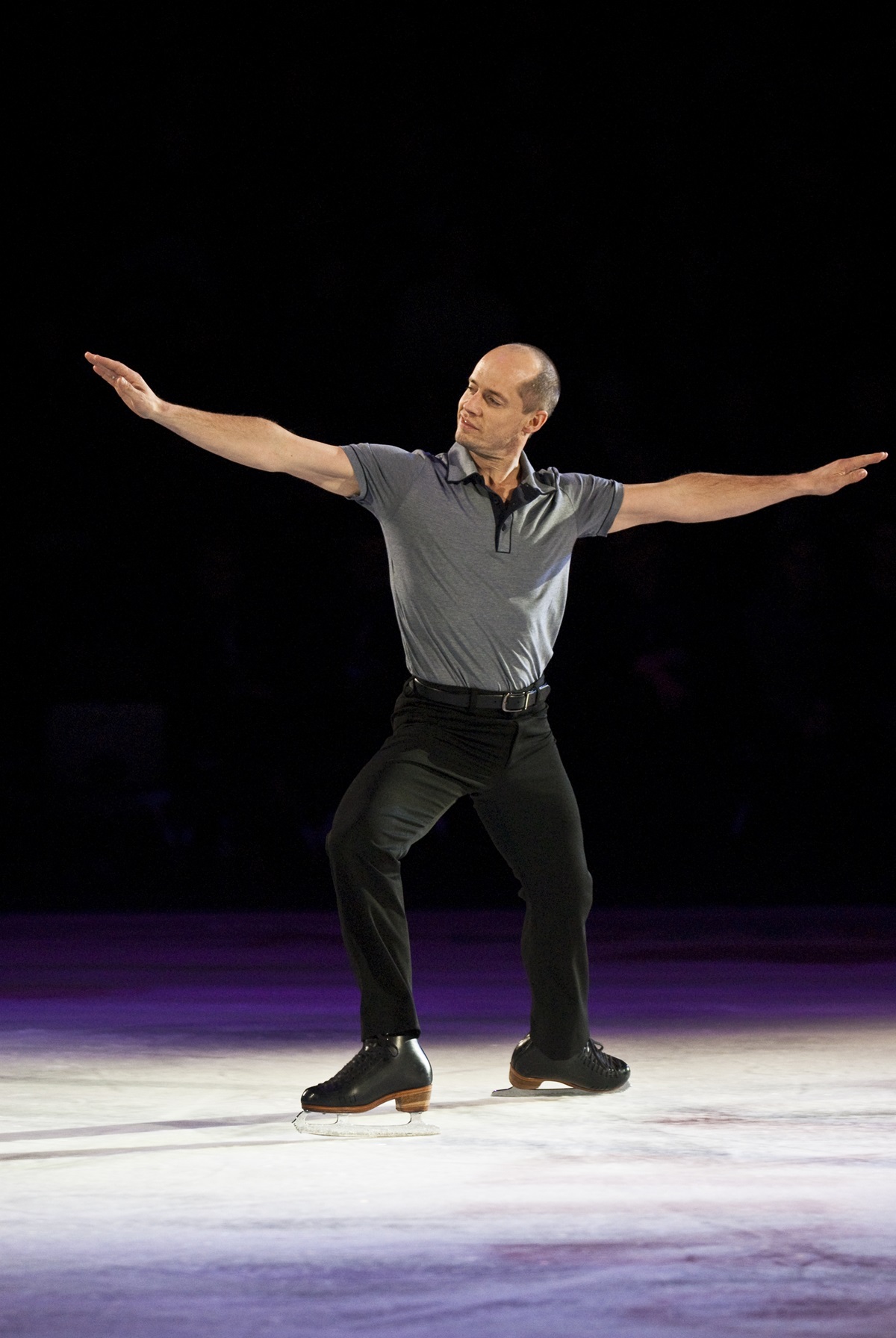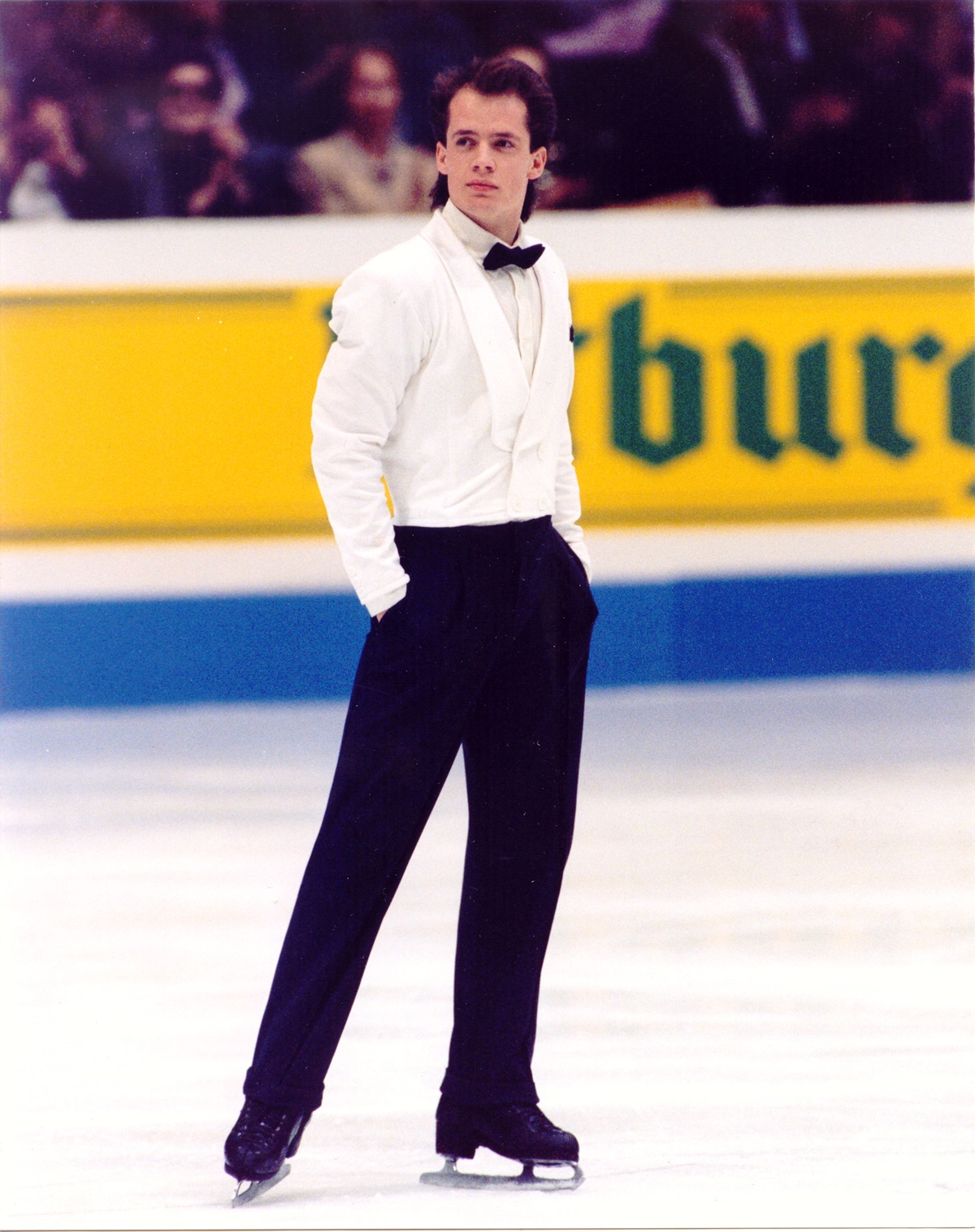A Lifer Who Loves to Glide
by Iris Winston
“I’m a lifer.”

Canadian skating legend Kurt Browning is talking about how important a part figure skating has played in his life.
“Some people will be the best in the room in competition, but they’re not lifers,” says the four-time world champion. “They’re not going to be skating for fun at 65 or seeking students to share their skating with or an audience to show off for. I’m a lifer who just loves to glide.
“I’ve had access to my sport from so many different viewpoints, as a young skater, a competitor, a
winner, a loser—(I tell people when it comes to the Olympics, I’m actually the ‘losingest’ figure skater in the world), as a flag-bearer, a choreographer, a performer, a commentator and a judge. I’ve written about skating and done some coaching. This sport has allowed me to have a stage and a microphone. It has given me all sorts of outlets and the chance to do all kinds of crazy things.”
Early on, as a pre-teen growing up on a farm in Caroline, Alberta, he competed in his first skating competition in nearby Lacombe. Blanking on the program, he improvised and won his first medal. That result confirmed that figure skating would win out over hockey for young Kurt.
“I got hockey skates when I was eight but didn’t skate much,” he recalls. “Then I got figure skates when I was 10 and it became obvious that I had some talent for [figure skating]. I didn’t have the right temperament for hockey anyway, so it wasn’t a hard decision. Looking back, I can’t remember much of my life without figure skating being the most important part of it, besides family.”
So it has been ever since. He says that one of his most treasured moments through a career punctuated by spectacular achievements—including the acclaimed quadruple toe loop—was winning the World Figure Skating Championship in Halifax in 1990. It was his third consecutive win, with one more world championship to come two years later.

“It wasn’t my best skating. I had a sore toe and could barely get my foot in my skate that week. But, for it to happen in Halifax with my family and a whole bunch of my friends from Alberta there and to end with 12,000 people singing O Canada, was definitely a highlight moment for me.”
The celebration continued after the event when, he says, “I went barhopping with my dad.”
A few months before this, Kurt had been awarded the Order of Canada, but his investiture was delayed because his mother was very ill and he wanted to wait until she was well enough to attend the ceremony with him. Sadly, that did not happen, but eventually he was invested alongside an old friend, John Brunton, with members of both their families at hand.
Another personal life/skating connection came to public attention when he proposed to his then longtime girlfriend Sonia Rodriguez.
“It certainly wasn’t planned,” says Kurt, who was part of the Stars on Ice company at the time. “It was entirely impromptu. I had the microphone and was killing time, taking questions from the audience while other skaters changed. Somebody asked me if I was married. I said, ‘Not yet, but it sounds like a pretty good idea.’”
Then he called Sonia from the audience, dropped to one knee and proposed before carrying her off backstage.

“It was a great moment,” says Kurt, who was married to Sonia, principal dancer with the National Ballet of Canada until her 2022 retirement, for more than two decades. “It also ties in nicely with how big a part of my life Stars on Ice was.”
Make that is. While Kurt was part of the touring figure-skating show as a performer for some 30 years, retiring last year, he’s back in another capacity for 2024. This spring, he’s acting as director and choreographer of the production that features the likes of Elvis Stojko, Patrick Chan and reigning Canadian dance champions Piper Gilles & Paul Poirier. Founded in 1986 by IMG executive Bob Kain and 1984 Olympic gold medalist Scott Hamilton, Stars on Ice showcases many figure-skating champions who continue their careers as professionals.
Kurt says that the longevity of his professional skating career is due, in part, to the fact that he takes a break from performing during the summer. “My body doesn’t get tired,” says the 58-year-old, who has been inducted into Canada’s Sports Hall of Fame (1994), the Skate Canada Hall of Fame (2000) and the World Figure Skating Hall of Fame (2006). “I try to stay in shape, but I don’t skate every day. When September comes, I feel emotionally ready to come back to the ice. Even though you may lose something over the summer, and your physicality and prowess don’t stay with you, the performance can and you’re not tired of the relationship. And, as I say, I’m a lifer.”
Kurt, who was awarded the International Skating Union’s inaugural Lifetime Achievement Award in 2020,
The next stage of a career that has included being the Canadian flag bearer at the 1994 Olympics, commentating on competitive skating and co-hosting CBC’s Battle of the Blades, as well as a long list of awards and his celebrated showmanship on ice, involves teaching, alongside his second wife, former U.S. national champion figure skater Alissa Czisny.
“We recently returned from an adult camp in the U.S.” says Kurt. “I love the energy and passion that adults bring and seeing their tremendous joy when they figure out a new edge. It recharges my batteries about skating every time.”

On this occasion, the organizer screened a recording of Kurt’s famous Singing in the Rain program for the students at the end of the camp.
“That was a pretty nice gift for me too, as I watched it,” says Kurt, talking about one of his most famous routines. “Gene Kelly set up the ball in the movie and I got to kick it on the ice. All I had to do was follow the construct and not mess it up. I was also surrounded by talented people who made me look good. Many times, I was set up for success on the ice by the people I was working with—the people doing the lighting, the music, the editing and especially the choreography. A good choreographer watches you and tries to include body movements that look good and feel good for you. Choreographer Sandra Bezic was a genius in highlighting the best constructs for me.”
Kurt, who was awarded the International Skating Union’s inaugural Lifetime Achievement Award in 2020, is now looking towards a slightly slower pace for the future, always with family and skating at its heart.
For the time being, he and Alissa will continue to live in the house next door to his former family home, where he has lived since 2015. But when his sons, Gabriel and Dillon, no longer need him close by, they plan to set up a series of adult skating camps.
“We have to learn about business and we will still do some shows, including some charity shows,” he says, confirming that skating will remain a large part of his life for the foreseeable future.
“The skating world has been really good to me and I am grateful to all the people who have supported me over the years,” he says. “I try to be really good back. Being given a microphone at the Olympics was one of the biggest honours of my career. As a commentator, I put my heart into it. I want to entertain but not get in the way of the person performing. I just love skating.”






